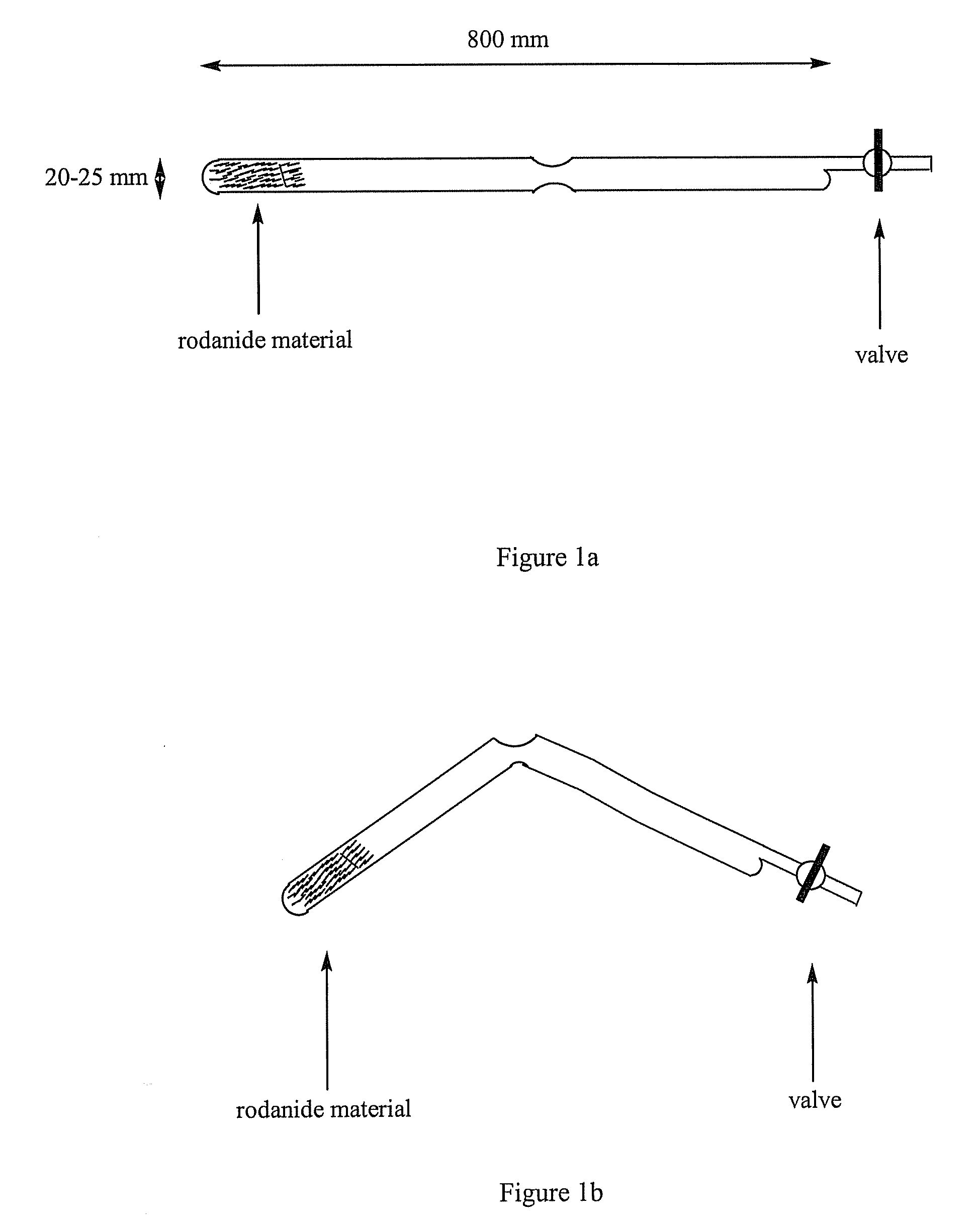Carbon nitride preparation method
a carbon nitride and preparation method technology, applied in the direction of thiocyanic acid, electrochemical generators, chemistry apparatus and processes, etc., can solve the problems of ineffective and time-consuming washing processes, impurities generally have negative effects in product applications, and byproducts are difficult to remove, etc., to achieve outstanding properties, improve properties, and simple and economically feasible
- Summary
- Abstract
- Description
- Claims
- Application Information
AI Technical Summary
Benefits of technology
Problems solved by technology
Method used
Image
Examples
example 1
[0040]For obtaining carbon nitride C3N4, ammonium rodanide in quantity of 10.00 g was taken, loaded into a reaction chamber, which was made of quartz glass and shaped as two connected vessels. The chamber was vacuumized to pressure of 10−4-10−5 mmHg and sealed. The chamber was placed into an oven (Carbolite) and heated up to T=600° C., keeping the temperature gradient Tmax=600° C., Tmin=ambient temperature through the vessels. The following reaction was conducted for 12 hours:
4NH4CNS→2(NH4)2S+C3N4+CS2
[0041]Formed CS2 and volatile impurities condensed in one of the vessels due to the existence of the temperature gradient. This vessel was removed. Ammonium sulfide (NH4)2S dissolved readily in water, being thus readily removed by simple washing. As a result, graphitic carbon nitride C3N4 was obtained as a pale-brown powder, the yield of which was 20%. According to the X-ray analysis, the carbon nitride material possessed carbon-nitride bonding and structure similar as reported in the ...
example 2
[0042]For obtaining carbon nitride C3N4, ammonium rodanide in quantity of 10.00 g was taken, loaded into a reaction chamber, which was made of quartz glass and shaped as two connected vessels. The chamber was evacuated to pressure of 10−3-10−4 mmHg and sealed. The chamber was placed into an oven (Carbolite) and heated up to T=650° C., keeping the temperature gradient Tmax=650° C., Tmin=ambient temperature through the vessels. The following reaction was conducted for 12 hours:
4NH4CNS→2(NH4)2S+C3N4+CS2
[0043]Formed CS2 and volatile impurities condensed in one of the vessels due to the existence of the temperature gradient. This vessel was removed. Ammonium sulfide (NH4)2S dissolved readily in water, being thus readily removed by simple washing. As a result, graphitic carbon nitride C3N4 was obtained as a pale-brown powder, the yield of which was 17%. According to the X-ray analysis, the carbon nitride material possessed carbon-nitride bonding and structure similar as reported in the s...
example 3
[0044]For obtaining carbon nitride C3N4, ammonium rodanide in quantity of 10.00 g was taken, loaded into a reaction chamber, which was made of quartz glass and shaped as two connected vessels. The chamber was evacuated to pressure of 10−4-10−5 mmHg and sealed. The chamber was placed into an oven (Carbolite) and heated up to T=500° C., keeping the temperature gradient Tmax=500° C., Tmin=ambient temperature through the vessels. The following reaction was conducted for 12 hours:
4NH4CNS→2(NH4)2S+C3N4+CS2
[0045]Formed CS2 and volatile impurities condensed in one of the vessels due to the existence of the temperature gradient. This vessel was removed. Ammonium sulfide (NH4)2S dissolved readily in water, being thus readily removed by simple washing. As a result, graphitic carbon nitride C3N4 was obtained as a pale-brown powder, the yield of which was 14%. According to the X-ray analysis, the carbon nitride material possessed carbon-nitride bonding and structure similar as reported in the s...
PUM
| Property | Measurement | Unit |
|---|---|---|
| temperature | aaaaa | aaaaa |
| non-metallic | aaaaa | aaaaa |
| pressure | aaaaa | aaaaa |
Abstract
Description
Claims
Application Information
 Login to View More
Login to View More - R&D
- Intellectual Property
- Life Sciences
- Materials
- Tech Scout
- Unparalleled Data Quality
- Higher Quality Content
- 60% Fewer Hallucinations
Browse by: Latest US Patents, China's latest patents, Technical Efficacy Thesaurus, Application Domain, Technology Topic, Popular Technical Reports.
© 2025 PatSnap. All rights reserved.Legal|Privacy policy|Modern Slavery Act Transparency Statement|Sitemap|About US| Contact US: help@patsnap.com

